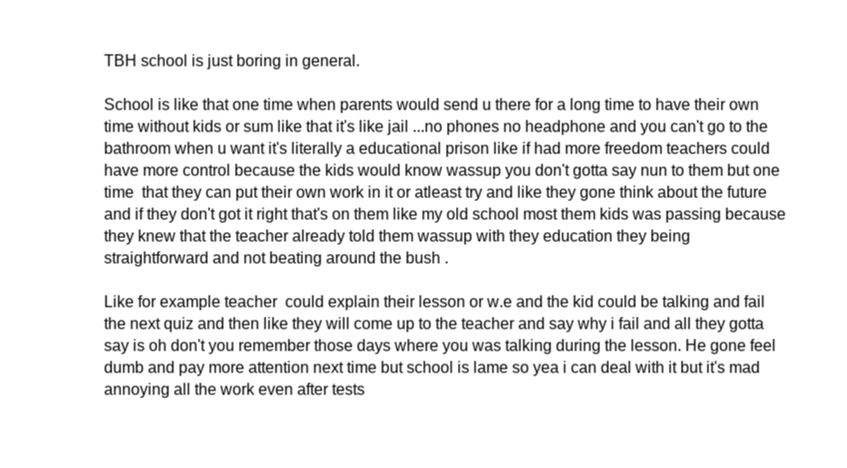This is one of the responses:
- Rabble rabble rabble grammar
- Wow. This kid is really struggling with both the structure of school, which they compare to a prison, and the academic content in a class that “gives a lot of work, even after tests.”
As I realized this, I felt I needed to write and share this moment-- which clarified the “missing the forest for the trees” theories of education I hear from so many teachers. If you have this kid in your class, or one like them, please take a moment to just listen to them.
Listen to what they are saying. Please don’t get so caught up in grammar and MLA guidebooks and double spacings and Times New Romans that you don’t hear what they are saying:
- School feels like a prison to me.
- Trying to learn something that is way beyond my skill level is (boring, frustrating, annoying). Please listen to me.


 RSS Feed
RSS Feed
